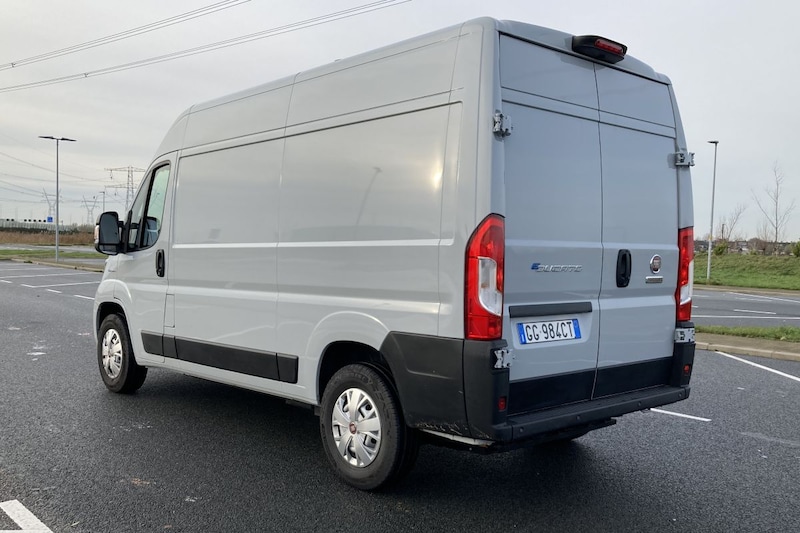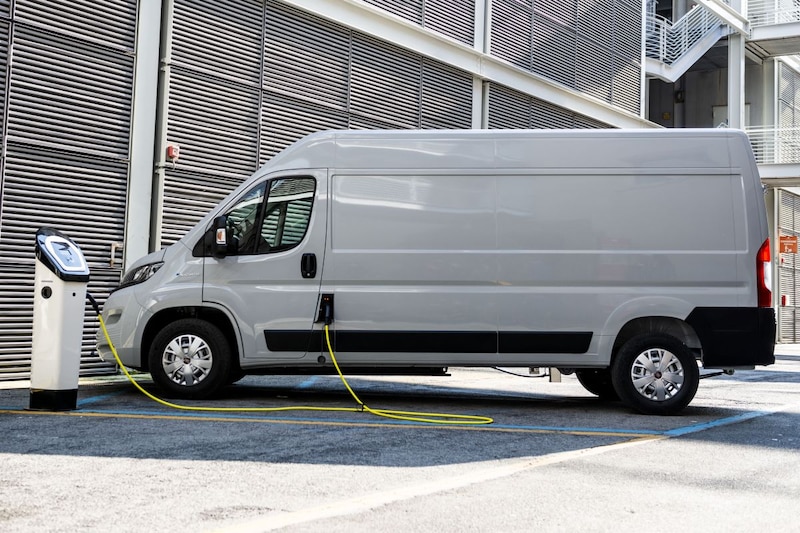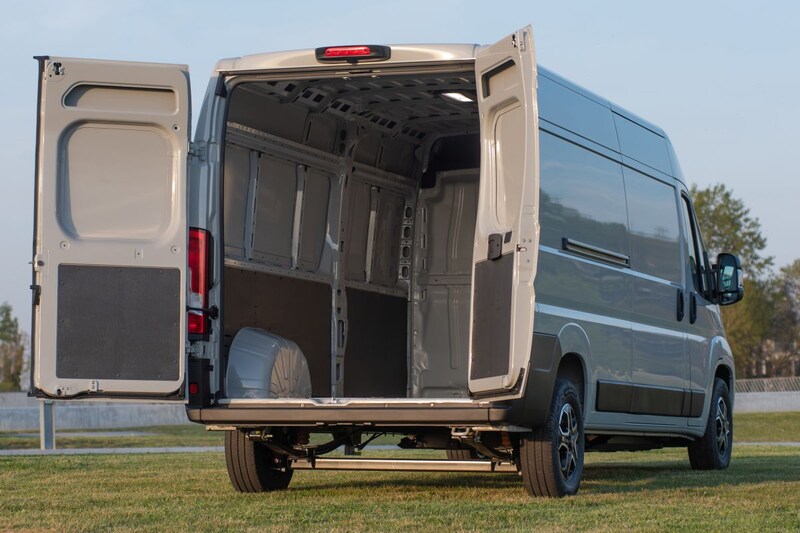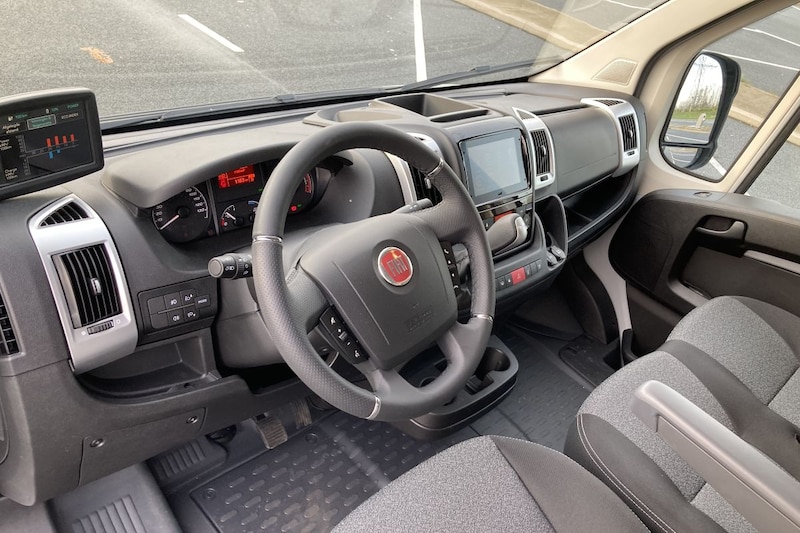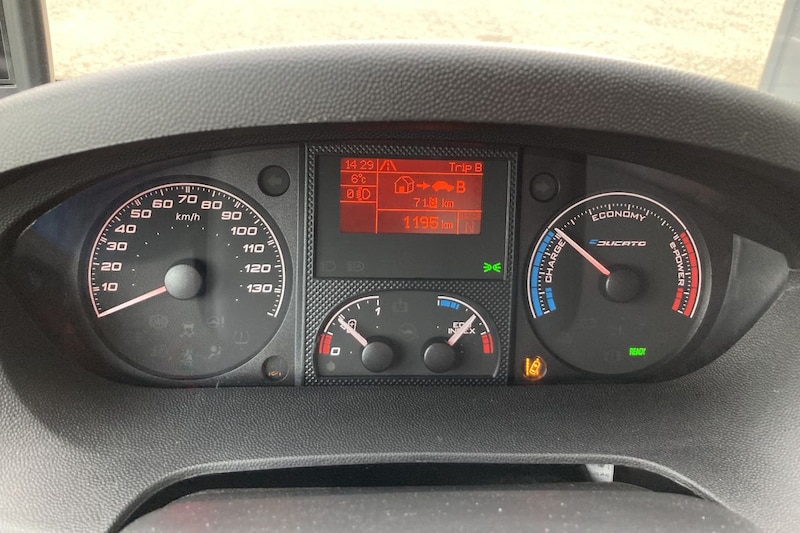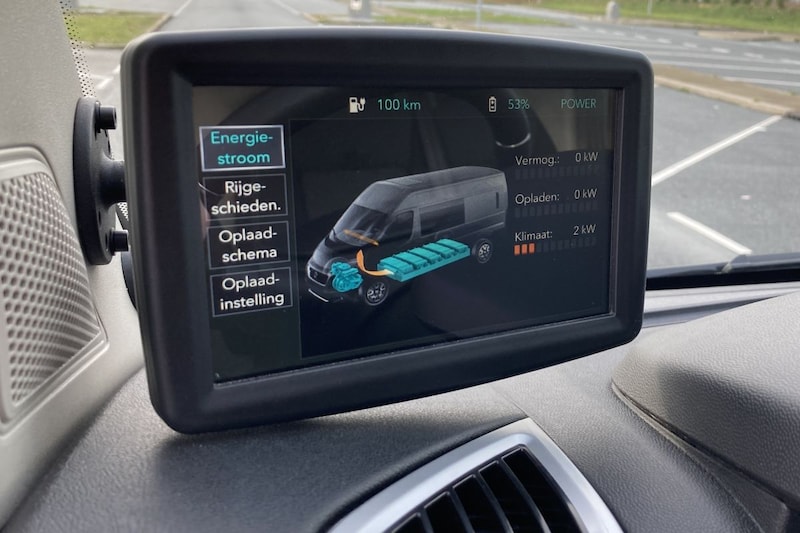The Fiat E-Ducato makes clear how big the difference is between an electric van that is delivered ex works or that – like its apparently identical brothers from Peugeot, Citroën and now Opel – are converted afterwards. Everything is better, is the simple conclusion.
Strikingly enough, Fiat still builds the electric Ducato on the basis of the previous model, so that you as a driver do not benefit from the renewed interior with digital instruments. Fortunately, the electric Ducato does have its own instruments, so that you are not staring at an empty rev counter (as with the Peugeot e-Boxer), but at a meter that indicates whether (and how much) power the car consumes or recovers. The former fuel gauge shows the charge status of the battery pack, while there is also an eco-index that tells you whether or not you are driving economically. There is also the well-known on-board computer for all kinds of driving information. On the left you will find an extra display with, among other things, a display of the energy flow and the ‘driving history’. What is still missing is unfortunately the current consumption in kWh/100 km.
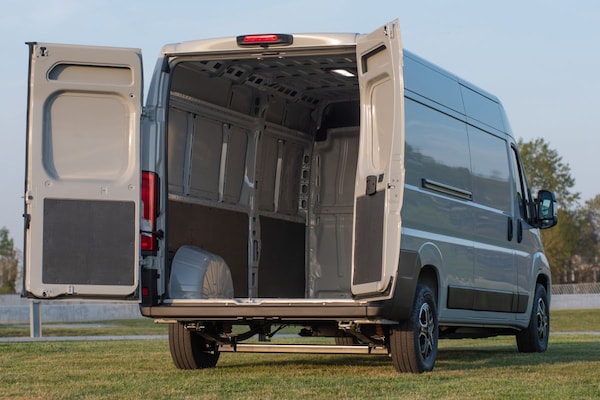
power
There are no push buttons for P, R and D, but a traditional automatic transmission, where the P unfortunately does not block the car; the handbrake remains mandatory when leaving the car. There is a choice of whether or not to regenerate; choosing is done by giving the lever in the D position a tap to the side. The difference between those two positions is large; coming to a complete stop without a brake pedal is just not an option. There are also three driving modes, of which Power (in addition to Normal and Eco) is the only correct one when you go outside the built-up area. Anyway, then you really have a lot of power (90 kW / 122 hp) under your right foot, so that you can smoothly merge on the highway and speed up to 110 km/h there remarkably easily (officially 100 km/h the maximum). Consumption is highly dependent on the version (approximately 29 to 35 kWh/100 km); our test drive was unfortunately too short to say anything meaningful about the practice.
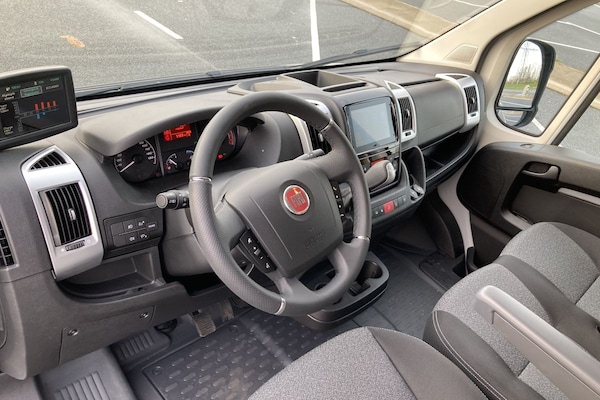
Plenty of choice
The well-functioning heating is also pleasant, which you simply operate via the usual buttons on the dashboard. Air conditioning is unfortunately an option (€1,150). The E-Ducato is available with a choice of two battery packs, with three units that together have 47 kWh and with five units that together have 79 kWh. The first version with a range of 143-159 kilometers is clearly intended for the city, the other with 237-260 kilometers is more suitable for longer journeys. DC charging is possible with a maximum of 50 kW; Fiat promises charging times of 50 minutes to 1.5 hours for the two battery packs. Of course, the larger battery pack puts pressure on the charging capacity, which is about 300 kg lower with the 79 kWh version. The loading volume is 10 to 17 cubic meters equal to that of the diesels. If that is not enough, Fiat also offers versions with a GVW of 4,250 kg. A big plus is the large number of models; as a panel van, it is available as L2H1 to L4H3 and as a chassis cab with four lengths. There is always a choice of the small or the large battery pack. Here, the Volkswagen e-Crafter and the Mercedes-Benz eSprinter look a bit pale, because they are each only available in one version. The prices of the E-Ducato are highly dependent on the chosen battery pack, because between three and five units there is a gap of no less than 18 thousand. Prices start at €51,900 for the 47 kWh version and €69,400 for the 79 kWh version.
– Thanks for information from Autoweek.nl

